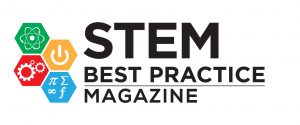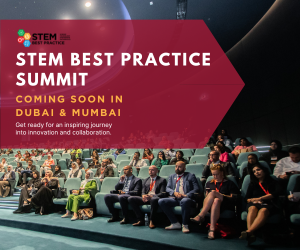Fostering STEM and UAE National Identity: The Story of Mohamed
 Mohamed Aboughonim is a highly accomplished chemistry educator with a robust academic foundation. He earned his Bachelor of Science and Education from the University of Alexandria, establishing a strong basis in the sciences and pedagogy. In 2021, he further enhanced his qualifications by obtaining a Postgraduate Certificate in Education International (PGCEi) from the University of Nottingham. This blend of traditional and contemporary educational frameworks reflects his commitment to staying at the forefront of teaching methodologies.
Mohamed Aboughonim is a highly accomplished chemistry educator with a robust academic foundation. He earned his Bachelor of Science and Education from the University of Alexandria, establishing a strong basis in the sciences and pedagogy. In 2021, he further enhanced his qualifications by obtaining a Postgraduate Certificate in Education International (PGCEi) from the University of Nottingham. This blend of traditional and contemporary educational frameworks reflects his commitment to staying at the forefront of teaching methodologies.
With over 12 years of experience fostering innovation and excellence in education, Mohamed specializes in AP and A-Level Chemistry while integrating advanced technologies like LabQuest and robotics into project-based learning to prepare students for future challenges.
A recipient of the Khalifa Award for Education – Creative Teacher Category in 2024, he has led his school’s Robotics Team to major successes, including first place at the UAE National VEX Robotics Championships and the Best Robotics Design Award. As a FIRST LEGO League (FLL) Judge and TEDx Organizer, he actively promotes critical thinking and cultural pride through STEM education.
Mohamed has shared his expertise as a speaker at prestigious events such as the MENA Teacher Summit and the STEM Best Practices Leadership Summit, inspiring educators across the region. Additionally, he is a Google Certified Trainer, Microsoft Innovative Educator Expert, and Expert Columnist for K12 Digest, where he shares insights on innovative practices and STEM education.
His dedication to fostering student success and aligning education with the UAE’s vision for innovation makes him a leader in his field.
1. What inspired you to advocate for STEM education, and why do you believe it is critical for the UAE’s future?
My advocacy for STEM education is deeply rooted in its transformative potential to shape the future of individuals and nations. STEM education aligns seamlessly with the UAE’s vision of creating a knowledge-based economy, as outlined in initiatives like UAE Vision 2071. This vision prioritizes innovation, technology, and sustainability as pillars for the nation’s future development. The UAE’s investment in sectors such as renewable energy, space exploration, and artificial intelligence (AI) has solidified my belief that empowering students through STEM education is vital to preparing them for leadership in these fields.
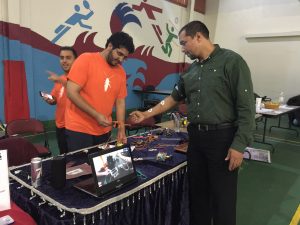 Throughout my career, I have witnessed how STEM ignites curiosity, fosters problem-solving skills, and drives innovation among students. One memorable instance was guiding my school’s Robotics Team to win first place at the UAE National VEX Robotics Championships and the Best Robotics Design Award. These achievements highlighted the profound impact of STEM education on developing critical thinking and teamwork skills, instilling a passion for innovation in students.
Throughout my career, I have witnessed how STEM ignites curiosity, fosters problem-solving skills, and drives innovation among students. One memorable instance was guiding my school’s Robotics Team to win first place at the UAE National VEX Robotics Championships and the Best Robotics Design Award. These achievements highlighted the profound impact of STEM education on developing critical thinking and teamwork skills, instilling a passion for innovation in students.
Additionally, as a speaker at events like the MENA Teacher Summit and the STEM Best Practice Summit, I have shared my vision for using STEM education to create pathways for future leaders.
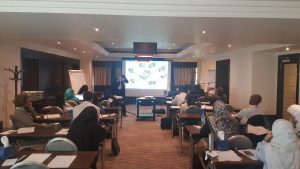 2. How do you incorporate STEM concepts into the curriculum to make them accessible and engaging for students across different age groups?
2. How do you incorporate STEM concepts into the curriculum to make them accessible and engaging for students across different age groups?
Incorporating STEM concepts into the curriculum requires a creative and flexible approach to ensure engagement across various age groups. My methodology combines project-based learning (PBL), advanced technology integration, and real-world applications to make STEM relatable and exciting.
At the Applied Technology School, we implement STEM through STREAM (Science, Technology, Reading, Engineering, Arts, and Math) projects conducted termly, encouraging students to merge innovation with interdisciplinary learning. Additionally, our annual science fair provides students a platform to showcase their work, collaborate with peers, and present their findings.
For younger students, I focus on hands-on experiments and basic engineering concepts, such as designing models for sustainability and finding solutions to environmental problems. For older students, I introduce advanced technologies like LabQuest for data analysis, robotics programming, and coding platforms that enable them to build solutions to real-world problems, such as energy-efficient systems.
As the leader of the Robotics Team, I have guided students to numerous achievements, including First and Second Place Awards at the UAE National VEX Championships, along with accolades such as the Community Award, Best STEM Research, and the Best Robotics Design Award. These successes reflect the integration of theoretical knowledge with practical innovation, empowering students to excel in real-world challenges.

3. Can you share your thoughts on the importance of project-based learning in STEM, and how do you implement it in your teaching?
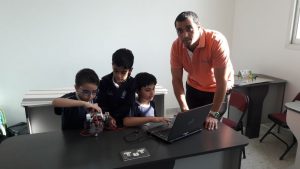 Project-based learning (PBL) is a cornerstone of my teaching philosophy. It equips students with essential skills such as critical thinking, creativity, and collaboration while providing a platform for them to tackle real-world problems.
Project-based learning (PBL) is a cornerstone of my teaching philosophy. It equips students with essential skills such as critical thinking, creativity, and collaboration while providing a platform for them to tackle real-world problems.
Through PBL, students engage in hands-on activities that connect STEM concepts to their daily lives and future aspirations. For instance, in chemistry, I have guided students in developing sustainable energy solutions, such as creating small-scale biofuels from organic waste materials. These projects not only foster a deeper understanding of chemical principles but also encourage students to think about sustainability and innovation in alignment with the UAE’s vision for a greener future.
Beyond chemistry, I’ve supported students in constructing solar-powered devices, programming autonomous drones, and developing solutions for environmental challenges. These projects align with academic standards while encouraging students to think like engineers and problem-solvers, fostering the skills needed for STEM careers.
One of my proudest moments as an educator was mentoring a team of students to win multiple awards in national and international STEM competitions. These achievements demonstrated the power of PBL to build confidence, perseverance, and teamwork. The projects often involved documenting their processes through data collection, videos, and detailed presentations, ensuring that students developed both technical and soft skills.
My role as a FIRST LEGO League (FLL) Judge further underscores the importance of structured PBL frameworks. Judging these competitions has provided me with valuable insights into designing projects that challenge students to innovate while meeting rigorous academic and ethical standards.

4. With the rapid evolution of technology, how do you ensure students acquire the future-ready skills needed to thrive in STEM-related careers?
 Preparing students for the future requires integrating emerging technologies and fostering a mindset of adaptability and innovation. In my teaching, I emphasize 21st-century skills like digital literacy, problem-solving, and teamwork alongside technical expertise.
Preparing students for the future requires integrating emerging technologies and fostering a mindset of adaptability and innovation. In my teaching, I emphasize 21st-century skills like digital literacy, problem-solving, and teamwork alongside technical expertise.
I integrate cutting-edge tools such as AI, robotics, and LabQuest for data collection into lessons, allowing students to explore their practical applications. For instance, students program robots to perform complex tasks, analyze trends using data visualization software, and collect precise data in experiments. These activities expose them to the tools and methodologies they will encounter in STEM-related careers.
Additionally, I encourage students to participate in STEM competitions, internships, and collaborative projects with industry experts. These real-world experiences provide invaluable exposure and enable students to apply theoretical knowledge to practical challenges. As a Google Certified Trainer, Microsoft Innovative Educator Expert, and Apple Teacher, I ensure seamless technology integration in the classroom, fostering both engagement and skill development.
Soft skills are equally critical. I design group projects and interdisciplinary activities that require students to collaborate, communicate effectively, and adapt to challenges. These skills are indispensable in today’s rapidly changing job market and prepare students to succeed in diverse professional environments.
As a member of the American Association of Chemistry Teachers (AACT) and the National Science Teaching Association (NSTA), I stay connected with global best practices and continuously refine my teaching methods. This allows me to incorporate the latest trends and innovations into my lessons, enhancing student engagement and ensuring they acquire the skills needed to excel in STEM fields.
5. What challenges have you faced in promoting STEM education, and how do you overcome them to ensure successful learning outcomes?
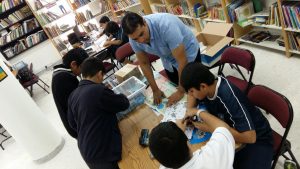 Promoting STEM education comes with its own set of challenges, including addressing diverse learning needs, resource limitations, and building stakeholder engagement.
Promoting STEM education comes with its own set of challenges, including addressing diverse learning needs, resource limitations, and building stakeholder engagement.
One significant challenge is catering to students with varying levels of prior knowledge and abilities. To address this, I employ differentiated instruction and leverage technology to create personalized learning experiences. Tools like LabQuest and robotics kits enable students to work at their own pace, ensuring accessibility and inclusivity.
Another challenge is fostering parental and community support for STEM initiatives. I have addressed this by participating in the organization of science fairs, workshops, and robotics showcases, where students present their projects and demonstrate their skills. These events not only highlight students’ achievements but also actively engage parents and stakeholders, helping to build a supportive ecosystem for STEM education.
Additionally, creating effective assessment frameworks for STEM projects has been a challenge. During my work in robotics competitions, I identified gaps in evaluation rubrics and developed clear, objective criteria for assessing creativity, teamwork, and technical proficiency. These frameworks ensure fairness and provide valuable feedback for students to improve.
My efforts have consistently resulted in successful learning outcomes, as evidenced by my students’ high performance in exams and their achievements in national and international STEM competitions. These successes reflect my dedication to overcoming challenges and creating an environment where all students can excel.
6. Implementing UAE National Identity in the Education System:
Integrating the UAE’s national identity into STEM education fosters both cultural pride and innovation. I secured a TEDx license under the theme “The Fabric of Us: Exploring UAE National Identity,” which will provide students with a platform to explore the UAE’s cultural heritage and its influence on innovation. The event aims to inspire students by connecting their cultural roots with forward-thinking ideas. To prepare students for the TEDx event, I led the TEDx ECA (Extracurricular Activity) at my school, guiding them through the process of organizing and presenting their ideas. This allowed students to take an active role in shaping the event while developing their presentation and public speaking skills.
 As a member of the National Identity Drive Team, I have played a key role in embedding UAE national identity into lesson plans and STEM projects. One example is when I organized the World Space Week event, aligned with the return of UAE astronaut Sultan Saif Al Neyadi from space. This event celebrated the UAE’s advancements in space exploration and engaged students with STEM through space-themed projects and discussions about the astronaut’s mission. It inspired students to envision themselves as future contributors to the UAE’s growing space innovation while strengthening their national pride and cultural identity.
As a member of the National Identity Drive Team, I have played a key role in embedding UAE national identity into lesson plans and STEM projects. One example is when I organized the World Space Week event, aligned with the return of UAE astronaut Sultan Saif Al Neyadi from space. This event celebrated the UAE’s advancements in space exploration and engaged students with STEM through space-themed projects and discussions about the astronaut’s mission. It inspired students to envision themselves as future contributors to the UAE’s growing space innovation while strengthening their national pride and cultural identity.
Another example is designing sustainable models that reduce reliance on oil, using different renewable energy solutions such as solar power and other clean energy sources widely implemented in the UAE to promote environmental sustainability. This approach ensures alignment with UAE Vision 2071, which emphasizes sustainability, technological innovation, and cultural preservation.
Through professional development sessions, we deepened our understanding of UAE culture and heritage, empowering new teachers to incorporate these values into their teaching practices.
